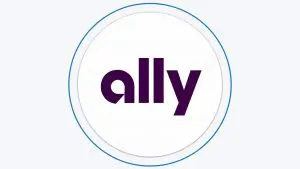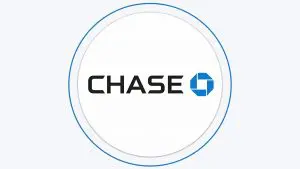Table Of Content
An emergency fund is vital for your long term financial well being. Having an emergency fund will provide the reassurance that should the unexpected happen, you won’t need to rely on costly credit cards or loans to cover the cost.
However, once you have your emergency fund, where should you put it? If you already have your emergency fund in an account, should you move it to a bank offering higher savings rates?
Here we’ll delve into this topic in more detail to help you make an informed decision.
The Interest Rate Battle
Interest rates are ultimately controlled by the FED as an inflation response. When inflation rates are on the rise, the FED increases the base interest rate to stimulate the economy and slow down the rate of inflation. We’re currently experiencing a period of high inflation and as a result, the FED has made numerous changes to the interest rate. The FED has raised the rates to the higher rates since 2007.
When the FED adjusts rates, this is passed on to consumers in the form of higher interest rates on both credit and deposit products. However, there is a balance, as banks want to lend to more consumers, but need the funds offered by savers to be able to accomplish this. Unfortunately, while banks tend to be quick to pass on the rate increases to their borrowers, they can be a little slow to increase their rates on deposits.
While this can be frustrating, it does create the potential for savers to leverage the demand for savers and look for competing banks who are offering higher rates.
The Pros and Cons of Moving Your Emergency Fund
Let's explore the pros and cons of moving your emergency fund to a bank with a higher savings rate:
Pros | Cons |
|---|---|
Solid Customer Service | Below Average APYs |
Rewards for Holding Multiple Accounts | High Minimum Balance Requirements |
Relationship Discounts | Limited Branch Service |
Multiple Account Options
| Limited Free Withdrawals |
- High Rates
The most obvious benefit of moving your emergency fund is being able to access higher rates, while high yield savings accounts offer around 4% APY.
You can also lock your rates for short terms such as a 6-month CD or 1-year CD, if you are sure you won't need the money soon.
This means that you’ll be earning more on your balance, which can really add up over time.
- Potential for Greater Federal Protection
Most banks carry FDIC insurance, which provides up to $250,000 per depositor. However, this limit is per institution.
So, if you have your money spread across multiple financial institutions, you’ll increase the amount of federal protection you can enjoy.
- Potential Welcome Bonuses
Banks tend to compete for business, so you may be able to receive a welcome bonus if you move to a new bank.
You will need to take care to check the promotion terms and conditions, as you may need to have certain transactions within a timeframe to qualify for the bonus.
- The Hassle
One of the main reasons why people don’t move their savings or emergency fund is the perceived hassle of making the change.
Many people simply don’t want the hassle of needing to fill in application forms and make transfers to a new account.
- Potential Long Process
Another possible drawback of moving your emergency fund is that switching to a new account can potentially be a long process.
You not only need to complete an application form, but some banks can take several days or longer to process it. This means that you could be waiting to arrange the change.
- Fees
You also need to be aware of any potential fees that you may incur as a result of moving your emergency fund. If your emergency fund is tied up in a CD, you are likely to incur an early withdrawal fee.
Some savings accounts also have a fee if you want to transfer funds out of the account.
Things to Consider Before Switching
We’ve laid out the positives and potential downsides of moving your emergency fund, but before you make any decisions, there are some things to consider.
- Do you have a good relationship with your existing bank? While getting an extra percent on your savings APY is a great thing, it may not be worthwhile if you switch to a bank that does not offer the same level of service. If you already have a good relationship with your bank, this should be valued.
- Does your savings impact other accounts? Many banks have monthly service fees that can be waived if you have a combined balance across qualifying accounts. If you move your emergency fund to another bank, will it mean that you incur a monthly fee on your checking account?
- Will you have the same access to your funds? It is important to check if there are withdrawal restrictions on your new account. Some accounts offer a higher APY, but you may be restricted to how much and how often you can withdraw your money.
Account | Monthly Fee | Savings APY | CDs APY |
|---|---|---|---|
$0 | 3.50% | 3.60% – 4.20% | |
$0 | 3.50% | 2.90% – 4.00% | |
$12 ($15, effective 8/24/2025)
Can be waived if you maintain a $1,500 minimum daily balance, making direct deposits or Associated SnapDeposits of $500 or more per statement cycle, or holding $5,000 in combined deposit accounts with the same statement cycle date or having a Health Savings Account or investment account
| 0.01% | 1.25% – 3.90% | |
$0 | up to 3.80% | N/A | |
$0 | 3.50% | Up to 4.00% | |
$10
Related to Wells Fargo Everyday Checking. The fee can be waived if you maintain a minimum daily balance of $500 or receive at least $500 in qualifying direct deposits per month. The fee is also waived if you’re 17 to 24 and have a linked Wells Fargo Campus Debit Card or Campus ATM card linked to the checking account
| 0.26% – 2.51% | 1.50% – 4.00% | |
$12
can be waived by maintaining an account balance of $1,500, qualifying deposit of $250+ per month or enrol in Preferred Rewards
| 0.01% – 0.04% | 0.03% – 4.00% | |
$10
Can be waived if you have monthly direct deposits of at least $500 or you maintain a daily balance of at least $500
| 2.90% | 2.70% – 4.70% |
How to Move Your Emergency Fund
If you’ve made the decision that you want to move your emergency fund to another bank, there are several steps you’ll need to go through. These include:
- Research your options: This is the part that causes most people to feel reluctant about moving a bank account, as you will need to research banks. Don’t be tempted to be dazzled by an impressive rate, as you will also need to check reviews of the customer service and facilities.
- Check the account terms and conditions: If you have a short list of accounts, you will need to carefully check the account terms and conditions to ensure that you are fully aware of any restrictions or charges that may apply.
- Open your new account: Once you’ve decided on a new account and bank, you’ll need to go ahead and start the account opening process. Fortunately, many banks make this quite simple and you may even be able to open the account online.
- Transfer the Funds: After you’ve had the confirmation that your new account is opened, you’ll need to move all or part of your emergency fund. You can typically do this by ACH transfer, but some banks allow debit card or other transfer methods. Be wary of sending your funds by wire, as this may incur a transfer fee both from the sending and receiving banks.
- Close out the old account: This is an optional step, but after your new account is funded and you’ve had confirmation that the transfer has been received, you will need to make the decision about whether to close out your old account. If your old account does not incur any fees, it may be worthwhile keeping it open, as you can use the account for another savings goal, but some people prefer the simplicity of closing the account.


















